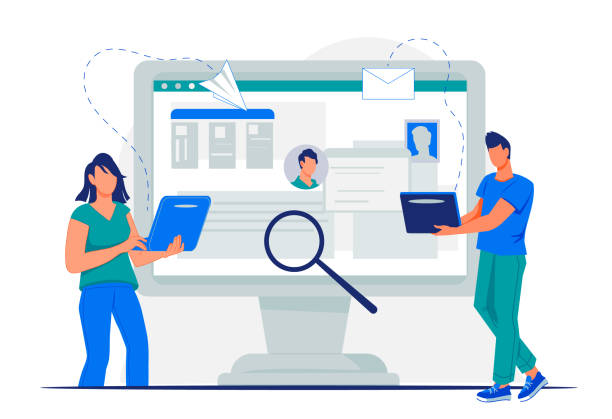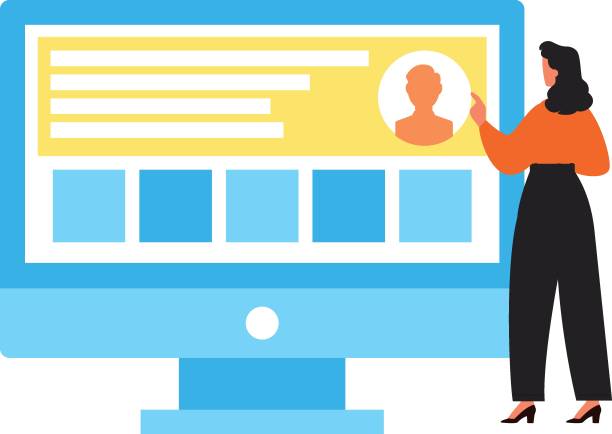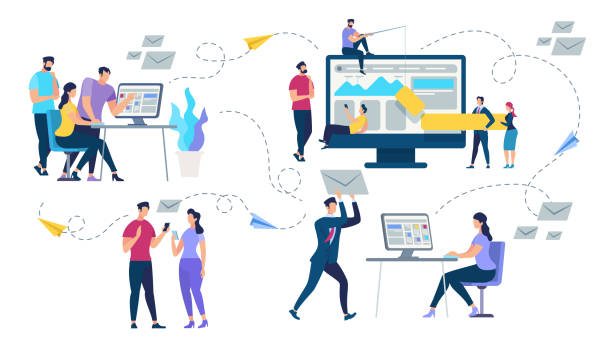Why Do You Need a Personal Website Design?
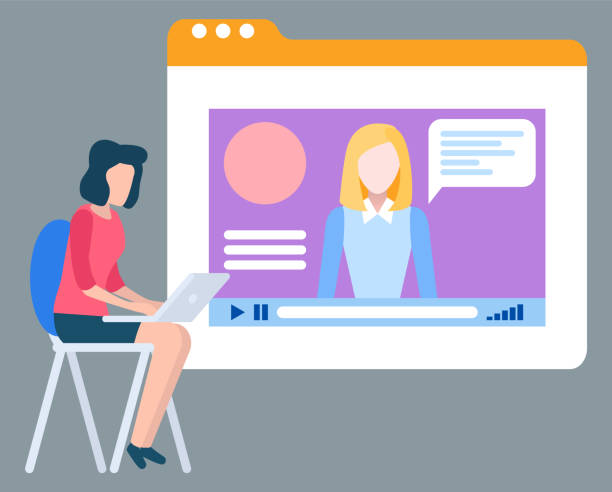
In today’s world, a digital presence is an undeniable necessity.
For every #individual or #professional seeking #personal_branding and showcasing their abilities, personal website design is not just an advantage, but a fundamental need.
A personal website allows you to have complete control over #your_story, #portfolio, or #your_services, without being dependent on the limitations and algorithms of social platforms.
This independent platform provides a unique opportunity for #self_expression and #direct_communication with your target audience.
This section offers an explanatory view on the importance and reasons for having a personal website.
It doesn’t matter if you are an artist, a writer, a specialist in a particular field, or even an eager student; a personal website acts as an advanced online business card.
This platform allows you to showcase your resume, portfolio, experiences, and even your thoughts in an organized and professional manner.
In fact, personal website design is a way to validate your online presence and create a comprehensive information base for anyone who wishes to know more about you.
This approach helps you to discover new opportunities, connect with like-minded individuals, and even earn income.
Having a website that perfectly reflects your personality and expertise sets you apart from competitors and creates a lasting impression on visitors.
Furthermore, a personal website acts as a digital hub for all your online activities.
You can centralize links to your social media, published articles, collaborative projects, and any other content you have produced there.
This centralization helps visitors easily access all information related to you, resulting in a better #user_experience.
In the information age, quick and easy access to credible information is the key to success, and a personal website plays exactly this role.
This approach is particularly crucial for professionals looking to attract new clients or professional collaborations.
Ultimately, personal website design is a big step towards controlling your personal and professional narrative in the online space.
Does your current corporate website not reflect your brand’s credibility and power as it should? Rasawob solves this challenge for you with professional corporate website design.
✅ Increase credibility and visitor trust
✅ Targeted attraction of more customers
⚡ Click for a free consultation!
Initial Planning and Strategy Phases
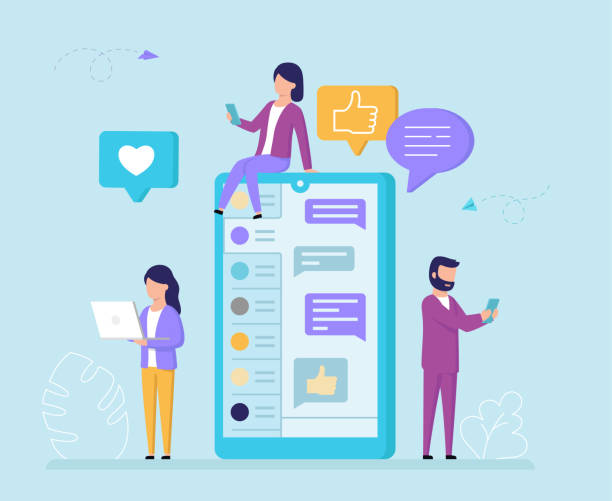
Before starting the #design_and_development process of a personal website, the #strategic_planning phase is of paramount importance.
This stage forms the #foundation_of_success for your project and prevents #waste_of_time and #resources.
To begin, you must first clearly define the #main_goal of creating your website.
Are you looking to display a #portfolio? Do you want to have a personal #blog and share your thoughts? Or do you intend to introduce your #professional_services and attract clients? The answers to these questions will determine the overall direction of your personal website design.
This section expertly and guidance-wise examines how to formulate an effective strategy.
After defining the goal, it’s time to identify the #target_audience.
A precise understanding of your audience (age, interests, needs, knowledge level, etc.) helps you produce suitable and engaging content for them and optimize the #user_interface (UI) and #user_experience (UX) design of the site to be appealing to them.
For example, if your audience is potential employers, the design should be professional and concise, but if you are writing for the artist community, you can be more creative.
This stage also includes #keyword_research related to your field of activity to ensure your site is better seen in search engines.
A strong strategic plan is the foundation of an effective and highly-visited personal website design.
The next step is #content_planning.
Decide what type of content you will provide on your site (articles, videos, images, resume, portfolio).
A content calendar can help you with #content_production_management_and_planning.
Also, think about the overall site structure; what pages do you need (homepage, about me, services/portfolio, contact us, blog) and how do these pages connect to each other? An initial #sitemap can help you visualize the overall structure.
Finally, don’t forget competitor analysis.
Examining similar personal websites in your field can give you good ideas and reveal their strengths and weaknesses, so you can have a unique and competitive personal website design.
These initial steps lay strong foundations for the future success of your website.
Choosing the Right Platform and Tools for Site Building
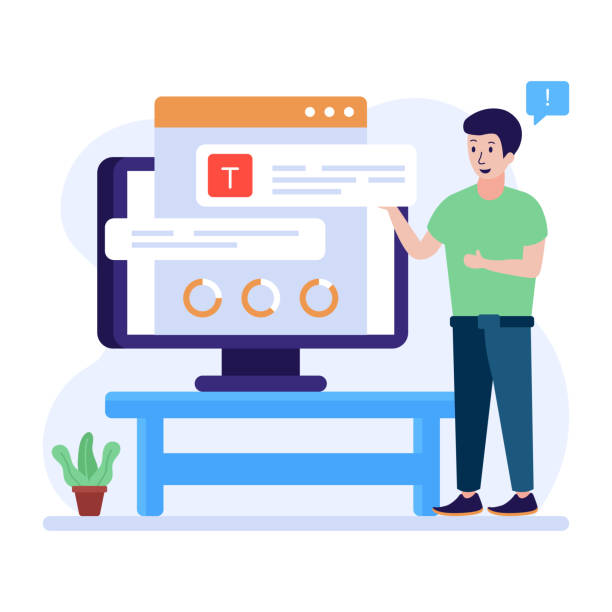
After the detailed planning phase, it’s now time to delve into the operational aspects of #personal_site_design_and_development: #choosing_the_right_platform.
This choice will be one of your most important decisions, as it directly impacts #development_speed, #ease_of_management, #expandability, and even #project_costs.
There are numerous options for personal website design, from #content_management_systems (CMS) to #drag-and-drop_website_builders and even coding from scratch.
Each of these options has its own advantages and disadvantages that should be examined based on your needs and technical skills.
This section provides an educational and expert guide to choosing the best tool.
One of the most popular options for personal website design is #WordPress.
WordPress is a powerful and flexible CMS that accounts for a high percentage of the world’s websites.
With WordPress, you have complete control over your site’s design and functionality, and you can easily expand its capabilities using various plugins and themes.
This option is ideal for those seeking advanced features and high flexibility, but it may require initial learning and some technical knowledge.
On the other hand, #website_builders like #Wix and #Squarespace are visual tools that allow users to create attractive websites without needing to code.
These options are very suitable for beginners or those looking for #quick_and_easy_setup, but they may have limitations in terms of customization and full control.
Finally, for web developers or those needing maximum customization, #coding_from_scratch (using HTML, CSS, JavaScript, and frameworks) is the best option.
This method is the #most_complex and takes more time, but it allows you to control every detail according to your precise needs.
Platform selection should be based on your #level_of_technical_knowledge, #budget, #available_time, and #required_features.
Careful study of each platform’s features and comparing them can help you make the best decision.
Below, a comparative table is provided for a better understanding of the differences, which will greatly assist you in the personal website design process.
Principles of Design and User Experience (UX)
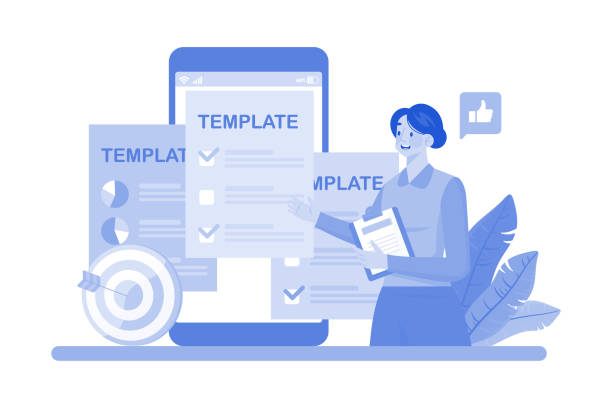
After platform selection, attention to #web_design_principles and #user_experience (UX) is highly important for personal website design.
A beautiful website alone is not enough; it must also be functional, easy to navigate, and #engaging_for_the_audience.
The #user_interface (UI), which includes visual elements like colors, fonts, and images, should align with your #personal_brand and convey a sense of professionalism.
But beyond aesthetics, it’s the #user_experience that determines how easily visitors can navigate your site and access the information they need.
This section provides an educational and expert guide to creating an excellent user experience.
One of the most important principles in personal website design is #responsive_design.
Given that a significant portion of users access the internet via mobile devices, your website must display well and function properly across various screen sizes (mobile, tablet, laptop).
#Simple_and_consistent_navigation is also crucial.
Site menus should be clear and understandable, allowing users to easily move from one page to another.
Using sufficient #white_space, #high-quality_images, and #readable_fonts also helps improve the overall appearance and experience.
Don’t forget that the main goal is to reduce user friction and facilitate their access to your content.
Further study on #UX_design_principles can provide valuable insights.
Page Load Speed is another important factor that affects both user experience and #SEO.
Slow websites can drive users away and lower your search engine ranking.
Optimizing images, using #compression, and choosing a #suitable_hosting can help improve your site’s speed.
Finally, consider accessibility as well.
Ensure that your website is usable for people with disabilities (e.g., using alt text for images, appropriate color contrast).
Adhering to these principles not only helps you create a beautiful personal website design but also ensures that your site provides a positive and efficient experience for all users and achieves its main goal.
Does your company’s website perform as befits your brand? In today’s competitive world, your website is your most important online tool. Rasawob, specializing in professional corporate website design, helps you to:
✅ Build credibility and customer trust
✅ Convert website visitors into customers
⚡ Get a free consultation!
Content Production and Optimization for Audience Engagement
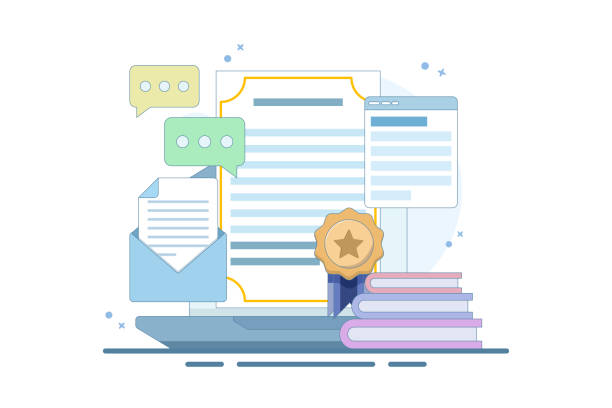
Content is #king! This statement holds true more than ever for #personal_website_design_and_marketing.
Without #engaging_and_relevant_content, even the best #visual_design and #user_experience cannot attract and retain audiences on your site.
Content production should be done with care and prior planning, always focusing on #quality and #added_value for the audience.
Content types can include #blog_articles, #case_studies, #online_resumes, #portfolios, #videos, and even #podcasts.
This section provides you with #educational and analytical tips for content production and optimization.
For your content to be visible in search engines, you must consider the principles of #search_engine_optimization (SEO).
#Keyword_research relevant to your field is the first step.
Use these words naturally in your titles, headings, and body text.
However, never engage in #keyword_stuffing, as this not only harms your ranking but also degrades the user experience.
Your content should be original, informative, and engaging.
Appropriate content length is also important; generally, longer and more comprehensive content is better ranked by search engines, provided its quality is maintained.
A personal website design without optimized content has a lower chance of being seen.
In addition to quality and SEO, content #readability is also crucial.
Use short paragraphs, subheadings, numbered and bulleted lists for #content_structuring.
This helps users easily find the information they need and prevents #visual_fatigue.
Also, #adding_media (images, videos, charts) to your content makes it more appealing and engaging.
Don’t forget that your content should answer audience questions and provide real value.
#Updating_old_content and #adding_new_content regularly also significantly helps maintain the site’s #freshness and improves SEO.
By following these tips, you can ensure that your personal website design is not only beautiful but also contains powerful content that attracts and retains users.
Technical and Infrastructure Aspects of a Personal Site
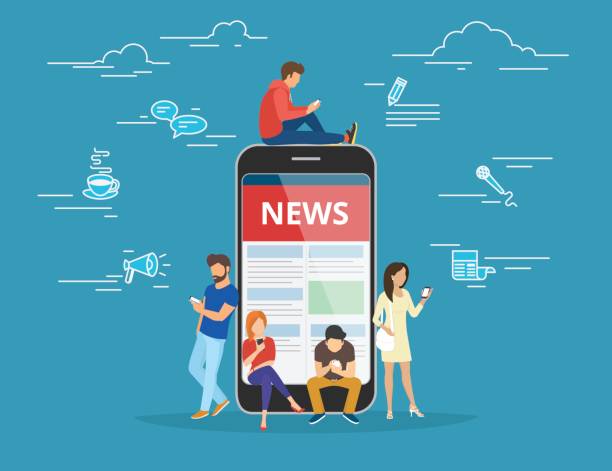
When it comes to #designing_and_implementing a personal website, #technical and #infrastructure aspects are as important as #visual_design and #content.
Choosing a #suitable_domain and #reliable_hosting are two main pillars for your site’s stability and performance.
The #domain_name is your website’s address (e.g., example.com) and should be #short, #memorable, and #relevant to your personal brand or field of activity.
Domain registration is done through #authorized_registrars and usually requires annual renewal.
This section covers technical and explanatory aspects of technical tips.
After the domain, it’s time for #hosting.
Hosting is space on a server where your website’s files (code, images, content) are stored to be accessible via the internet.
Choosing a #reliable_hosting_provider that offers #strong_support, #high_speed, and #adequate_security is very important.
There are different types of hosting, from #shared_hosting, which is cheaper, to #virtual_private_servers (VPS) and #dedicated_servers, which offer more power and control.
For starting a personal website design, shared hosting is usually sufficient, but as the site grows, you may need to upgrade.
Ensuring server stability and high uptime are also important points.
#Website_security is another critical aspect.
Installing an #SSL_certificate (Secure Sockets Layer), which starts your site’s address with HTTPS, is essential.
SSL not only #encrypts data between the user and the site but also helps improve your site’s #SEO_ranking and builds user trust.
#Regular_backups of site data are also very important to prevent data loss in case of issues.
Additionally, #optimizing_site_speed through #image_compression, using a #content_delivery_network (CDN), and #caching can improve the user experience and help with #site_SEO.
All these technical details, together, form the foundation of a successful and sustainable personal website design that can help you achieve your goals.
Introducing and Promoting Your Personal Website
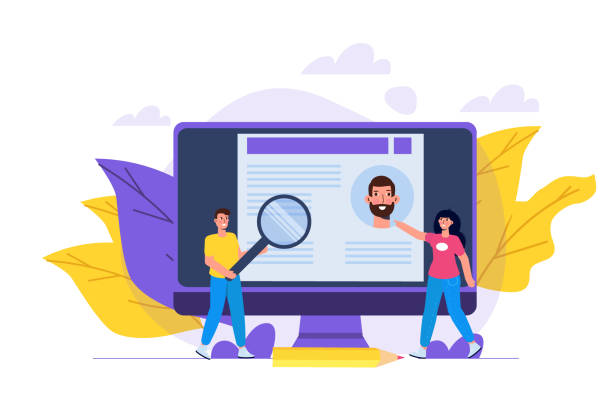
After completing the #design_and_implementation process and ensuring the website’s proper functionality, the #introduction_and_promotion phase begins.
Having a great website alone is not enough; you must ensure that your #target_audience knows about its existence.
For this purpose, a comprehensive and effective #digital_marketing_strategy is needed.
This strategy can include a combination of #online_and_offline_methods to provide maximum #visibility for your #personal_brand.
This section offers guidance and news tips for successfully introducing your site.
One of the most effective ways to promote a personal website design is to use #social_networks.
Place your website link in your social media profiles’ bios and regularly share new site content on these platforms.
This not only drives #traffic to your site but also helps #increase_brand_awareness.
Additionally, #content_marketing through #guest_blogging on relevant websites, or participation in #online_forums and #industry_groups can help you introduce your site to new audiences.
Sending email newsletters to subscribers is also an excellent way to keep your audience informed about your latest updates and content.
To ensure success in promoting your website, a #pre-launch_checklist is essential.
This checklist includes checking all links, contact forms, mobile compatibility, and SEO optimization.
Registering the site with Google Search Console and Bing Webmaster Tools is also crucial to ensure it is indexed by search engines.
You can also use #paid_ads on Google or social networks to increase visibility faster, keeping your budget in mind.
After launch, #monitoring_site_performance through #Google_Analytics helps you understand user behavior and optimize your marketing strategies.
All these measures ensure that your personal website design reaches the right audience and achieves your desired goals.
Continuous Maintenance and Updates
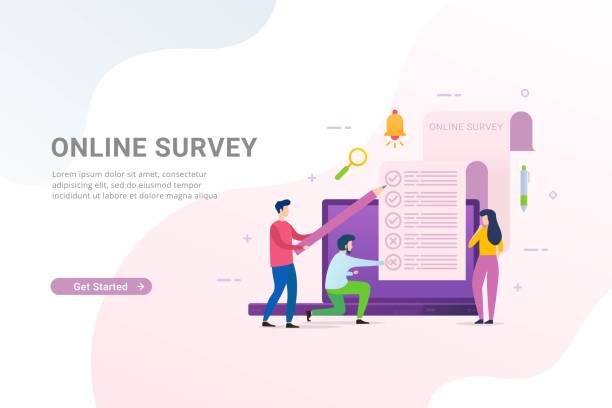
After #launching and #introducing your personal website, your work doesn’t end; it just begins.
#Continuous_maintenance_and_updates of the website are crucial for maintaining its #optimal_performance, #security, and #attractiveness for the audience.
A dynamic and always fresh website not only improves #user_experience but also signals to #search_engines that your site is active and valuable.
This process is an important part of #successful_personal_website_management.
This section provides you with expert and educational guidance in this area.
The first step in maintenance is #regular_backup of all website files and the database.
This protects you against data loss due to human error, technical issues, or cyberattacks.
Planning for automatic or manual weekly/monthly backups, depending on the volume of site changes, is recommended.
Also, #regular_software_updates (such as WordPress, themes, and plugins) are highly important for addressing #security_vulnerabilities and benefiting from #new_features.
Neglecting updates can expose your site to attacks. In the field of personal website design, security and being up-to-date are paramount.
In addition to technical aspects, #content_updates are also vital.
Review and update old content as needed, remove outdated information, and add new information.
#Regularly_adding_new_content encourages users to visit your site more often and helps #improve_SEO.
#Monitoring_site_performance (such as loading speed and 404 errors) and #site_security (such as checking for malware and intrusion attempts) through tools like #Google_Search_Console or security plugins is also essential.
By performing these activities regularly, you can ensure that your personal website design always remains #efficient, #secure, and #attractive, and continues to function as a #powerful_tool for #personal_branding and #audience_engagement.
Does your current e-commerce website design lead to losing customers and sales?
Rasawob, with its modern and user-friendly e-commerce website designs, is your solution!
✅ Significant increase in conversion rates and sales
✅ Strong branding and building customer trust
⚡ Get a free e-commerce website design consultation from Rasawob!
Monetization and Advanced Features (Optional)
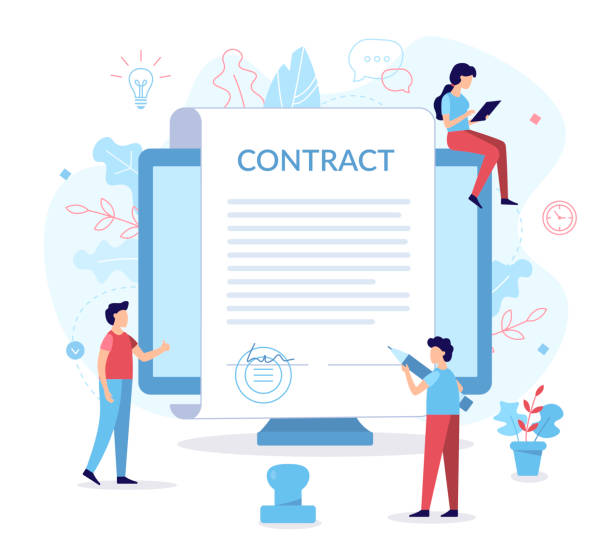
For many individuals, #personal_website_design is not just about having an online presence or showcasing a #portfolio; it can also become an #opportunity_for_monetization and #professional_activity_expansion.
Although this section is optional, understanding #monetization_methods and #advanced_features can significantly increase your website’s potential.
These capabilities allow you to generate income directly or indirectly from your expertise and content and achieve your #financial or #business goals.
This section provides an analytical and thought-provoking perspective on the hidden potentials of a personal website.
One of the most common ways to monetize a personal website design is #content_marketing and offering consulting services or selling digital products.
If your website has an active #blog, you can earn income through #Google_AdSense_ads, #affiliate_marketing, or even #sponsored_posts.
Selling #knowledge-based_products such as #e-books, #online_courses, #templates, or #digital_files related to your expertise can also be very profitable.
For example, a photographer can sell their images, or a designer can offer their graphic designs.
These opportunities transform your site from a #simple_showcase into a revenue-generating_engine.
Other advanced features you can add to a personal website design include an #online_booking_system for consulting services, #discussion_forums for building an audience community, or even a #membership_platform for providing exclusive content to special users.
For artists and designers, adding an #online_store (e-commerce) to sell artworks or handmade products is also a suitable option.
These features not only help #increase_your_income but also #strengthen_engagement with your audience.
With careful planning and assessing audience needs, you can fully leverage the potential of your personal_website and transform it into a #multi-purpose_hub for your #personal_branding and #online_business.
Challenges and Solutions in the Site Design Process

The path to #designing_and_building a personal website, despite all its advantages and opportunities, can also come with #challenges.
From #technical_issues to #content and #marketing, each stage may present obstacles.
Understanding these challenges and being prepared to tackle them is a crucial part of the #successful_personal_website_design process.
This section descriptively and guidance-wise examines some of the most common challenges and #practical_solutions to overcome them, ensuring your personal website design process is as smooth and trouble-free as possible.
One of the main challenges is the #lack_of_technical_knowledge.
Many individuals may not have sufficient experience in coding, hosting management, or site optimization.
The #solution to this challenge is to use #user-friendly_platforms like WordPress or website builders (Wix, Squarespace), which require less technical knowledge.
Additionally, utilizing #online_learning_resources, #training_courses, and #seeking_advice_from_experts can help you acquire the necessary skills.
Another challenge is #producing_regular_and_high-quality_content.
To overcome this challenge, #meticulous_content_planning, #creating_valuable_content, and #periodically_updating_old_content are recommended.
Focusing on your specific niche can also help you produce specialized content.
#Traffic_generation and #SEO can also be a significant challenge, especially for newly established websites.
For this purpose, #patience_and_persistence in implementing #SEO_strategies (such as keyword research and link building) and #active_promotion on social media are essential.
Using #web_analytics_tools (such as #Google_Analytics) to monitor site performance and identify weaknesses is also very useful.
The last challenge is #maintaining_site_security against cyberattacks.
For this, #regular_software_updates, use of #SSL_certificates, #choosing_strong_passwords, and #continuous_backups of site data are recommended.
With a #strategic_approach and #adherence_to_principles, these challenges can be overcome, leading to a successful and sustainable personal website design.
Every #challenge is an opportunity for #learning and #growth.
Frequently Asked Questions
| Number | Question | Answer |
|---|---|---|
| 1 | Why should we have a personal website? | A personal website allows you to professionally showcase your resume, portfolio, experiences, and perspectives, and strengthen your personal brand. This helps increase career and networking opportunities. |
| 2 | What content should we include on a personal website? | It usually includes “About Me”, “Resume” (skills and experiences), “Portfolio” (projects and achievements), “Blog” (articles and insights), and “Contact Me” sections. The content should be appropriate for your website’s purpose. |
| 3 | What is the best platform for building a personal website? | WordPress is a very popular option due to its high flexibility, numerous themes and plugins, and large user community. Platforms like Wix and Squarespace are also suitable for beginners. |
| 4 | What points should be considered in personal website design? | Responsive design for proper display on mobile and tablet, high loading speed, a simple and attractive user interface (UI) and user experience (UX), and search engine optimization (SEO) are key points. |
| 5 | How to choose a suitable domain name for a personal website? | It’s best for the domain name to be simple, short, memorable, and related to your name or personal brand. Using common extensions like .com, .net, or .ir is recommended. |
| 6 | What is the importance of the Portfolio section on a personal website? | The portfolio section is the strongest tool for showcasing your skills and completed projects. This section helps potential employers or clients tangibly see your abilities and have more confidence in you. |
| 7 | Is adding a blog section to a personal website useful? | Yes, a blog allows you to share your expertise through articles and writings, interact with your audience, and improve your site’s ranking in search engines by producing fresh content. |
| 8 | How can a personal website be made to look professional? | Using a clean and modern design, a high-quality and professional profile picture, writing content without spelling or grammatical errors, and ensuring all links and forms function correctly greatly contribute to the website’s professionalism. |
| 9 | What does personal website maintenance and updating include? | Regular content updates, checking links and forms, regular backups of data, and updating the content management system (like WordPress) and plugins are essential for maintaining security and proper functioning. |
| 10 | How much does it cost to design and maintain a personal website? | The cost can vary. It includes domain purchase (approx. $15-50 per year) and hosting (approx. $50-200 per year). Using free templates or paying for premium templates and plugins also affects the overall cost. |
And other services of Rasawob Advertising Agency in the field of advertising
Smart Digital Advertising: An effective tool for campaign management with the help of key page optimization.
Smart Brand Identity: Revolutionize campaign management with the help of user experience customization.
Smart UI/UX: A combination of creativity and technology for digital branding by using real data.
Smart Google Ads: A new service to increase website traffic through user experience customization.
Smart Digital Advertising: Designed for businesses seeking online growth through attractive user interface design.
And over hundreds of other services in the field of online advertising, advertising consulting, and organizational solutions
Online Advertising | Advertising Strategy | Advertorial
Sources
Personal Website Design Guide
Key Tips for Building a Professional Website
Best Methods for Building an Online Portfolio
How to Build a Successful Personal Blog?
? In today’s competitive world, a strong online presence is the key to success. Rasawob Afarin Digital Marketing Agency provides comprehensive services including fast website design, SEO, and social media management, taking your business to its peak. For a free consultation and to learn more about our services, contact us today. 021-91097325
📍 Tehran, Mirdamad Street, Next to Central Bank, Southern Kazeroun Alley, Ramin Alley, No. 6

